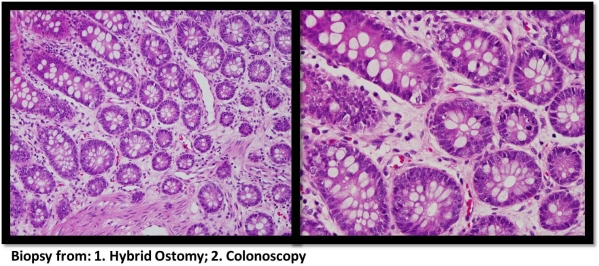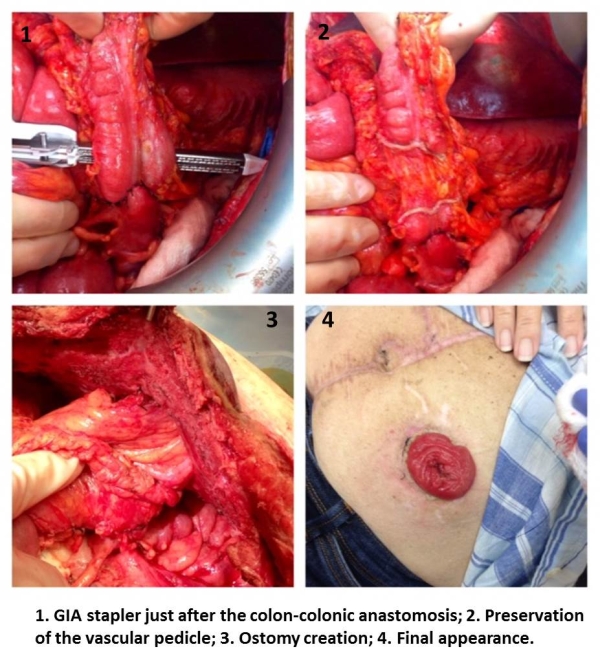Hybrid Ostomy – New Technique in Intestinal Transplantation
Miami Transplant Institute, University of Miami Miller School of Medicine, Miami, FL.
Meeting: 2015 American Transplant Congress
Abstract number: A273
Keywords: Biopsy, Intestinal transplantation
Session Information
Session Name: Poster Session A: Small Bowel All Topics
Session Type: Poster Session
Date: Saturday, May 2, 2015
Session Time: 5:30pm-7:30pm
 Presentation Time: 5:30pm-7:30pm
Presentation Time: 5:30pm-7:30pm
Location: Exhibit Hall E
Introduction: Many experimental non-invasive methods have been tested to assess the intestinal graft, but none of them proved to be reliable. Biopsy of the intestine is the gold standard to rule out any graft abnormality. Usually a temporary ostomy is created to facilitate the graft evaluation and without any preparation or sedation, the mucosa can be assessed and biopsied with minimal risk. However, patients with an ostomy may present with dehydration and lower quality of life. Recently, our group is selectively performing multivisceral transplants without an ostomy. Although, perforation of the colon is a potential risk.
Methods: Describe the surgical technique of the Hybrid Ostomy.
Technique: A 57 year old female with a PRA of 100% and strongly positive cross match for B and T cells underwent a multivisceral transplant. An end to side anastomosis was performed between the native and transplanted colon. The colon was divided with a stapler distally from the anastomosis preserving the vascular supply. The piece of colon was brought out to the skin as an ostomy in a regular fashion. Biopsies of the transplanted colon were easily obtained and patient was not exposed to dehydration due to high output. In the second month after transplant, patient presented with mild diarrhea and a biopsy from the HO showed rejection. A colonoscopy was performed and the biopsy showed similar findings with apoptotic bodies approaching grade 1 rejection. Patient was treated and follow up biopsies from the HO returned to normal. The "fake" ostomy was resected after 6 months of transplant.
Conclusion: The HO is technically easy and combines the benefits of not having a real ostomy with the advantage of histological evaluation of the graft without the risks of colonoscopy 

To cite this abstract in AMA style:
Beduschi T, Garcia J, Ruiz P, Tekin A, Selvaggi G, Nishida S, Fan J, Vianna R. Hybrid Ostomy – New Technique in Intestinal Transplantation [abstract]. Am J Transplant. 2015; 15 (suppl 3). https://atcmeetingabstracts.com/abstract/hybrid-ostomy-new-technique-in-intestinal-transplantation/. Accessed December 14, 2025.« Back to 2015 American Transplant Congress
